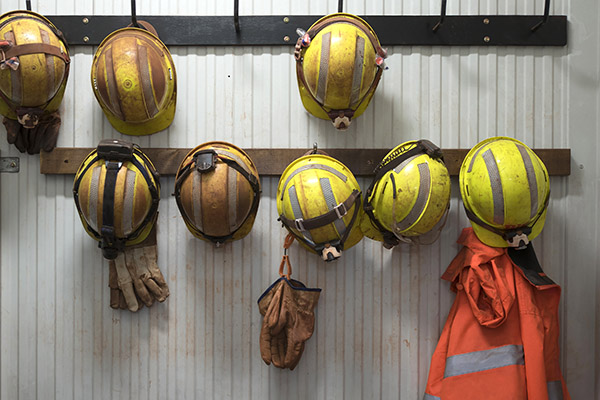Tis The Season For Injury Prevention
New technology is ready to protect novice materials handling workers
With the peak holiday season upon us for warehousing and distribution, here are some sobering facts to consider:
- 5.2% of the US workforce is injured every year
- 8.5M US workers are at “very-high” risk of lumbar Injury
- 22M US workers are at “high” risk of lower lumbar injury
- The average direct cost of a back injury = $60,000 [OSHA]
- Direct cost of lift-related injuries in the US = $15B [OSHA]
- Direct and indirect costs of lift-related injuries = $56B [OSHA]
For major companies across logistics, 3PL and e-commerce retail, those numbers tell only part of the story. During the upcoming holiday season, they may experience peaks of two-to-five times their average supply chain volumes. This necessitates a deluge of new and seasonal hires to work in frantically busy distribution centers – including hundreds of thousands of mostly inexperienced manual materials handlers (MMH).
Novice workers generally have significantly higher rates of workplace injury. In theory, the volume of packages these employees are expected to move increases over time ― beginning at 25% productivity and ramping up to 100% over the ensuing weeks. However, our IoT system data reveals that during their onboarding period, new hires often actually lift more than experienced workers, placing them at even greater risk of injury as they acclimate to the mental and physical demands of the job. This pattern is particularly pronounced during the busiest times of year.
Distribution centers certainly train new and seasonal hires and invest in safety programs and safety equipment. But as they plunge into the holiday season, time and resources grow extraordinarily tight, and these standard approaches often prove woefully inadequate. New and seasonal MMH hires typically receive about a half day of onboarding and safety training, after which there is little follow-up or systemic monitoring of novice employees, particularly after the first few days. The result? Rates of workplace injuries during the holiday season are often barely tolerable, or worse.
They are also largely preventable.
While Internet of Things (IoT), Artificial Intelligence (AI), and Machine Learning (ML)–based applications are being ingrained in a wide range of supply chain operations, few DCs (or other kinds of facilities where employees perform manual labor) have applied these technologies to prevent workplace injuries. Effective solutions are both readily available and easy to implement. Here’s how it works:
Employees can wear an all-in-one sensor that collects multiple user and environmental risk factors ― including the factors that vary throughout the work day in a fast-paced industrial workplace. The sensor is worn on the user’s torso [See Figure 1] with soft adjustable straps, to measure the orientation of the user’s trunk as he or she works. With this arrangement, trunk position in the user’s sagittal, lateral, and twisting directions can be fully determined, along with trunk movement velocity. The data is then captured and processed to identify the degree of lower back injury risk.
Figure 1

The wearable sensor includes a vibrating motor that gently notifies workers via haptic (i.e., sense of touch) feedback whenever they to fail to maintain proper posture or otherwise engage in unsafe motion, thus encouraging conformance to OSHA safe lifting guidelines. With such continuous, non-judgmental feedback (versus occasional retroactive correction), even novice operators begin to instinctively ‘flow’ with the work, bending at the knees and pivoting when twisting to help mitigate lower lumbar risk.
As important, an IoT platform seamlessly integrates data from each worker’s body sensors into the company’s existing enterprise data network to provide a comprehensive view into the industrial safety situation at each facility. Every employee’s data runs through an ML-enabled algorithm to gauge ergonomic risk. These unique metrics inform your organization’s safety and deployment decisions down to each shift, job function, and individual employee, allowing management to foresee injury hazards and take proactive as well as corrective actions.
A controlled study of just such a system, conducted by StrongArm Tech at a major 3PL company, demonstrated the degree to which MMH worker injuries are preventable. When comparing a group of workers using haptic feedback to a control group without it over a 3-month period, the group with haptic feedback achieved a 41% reduction in lower back injury rate. When considering the actual motion factors involved in lifting, the haptic group also saw a 36% reduction in time spent at very high risk of injury

For this company in particular, that equated to over a 560% return on investment from the haptic feedback wearable technology. Additionally, there was no significant difference in productivity between the two groups ―demonstrating it is possible to improve safety without sacrificing critical productivity during peak season.
Most significantly at this time of year, as companies prepare to bring on throngs of new and seasonal hires, this same study showed that haptic feedback can have a particularly significant impact on at-risk novice employees. Manual materials handlers with less than 6 months of tenure reduced their risk of injury with haptic feedback by double that of more tenured workers.
In short, wearable haptic feedback technology provides a solution to critical safety issues that grow especially acute during each year’s busy holiday season . The case for applying this technology to protect at-risk workers is rock solid in terms of safety, productivity, and return on investment. The only remaining question is: Why go through another holiday season without it?
Alberto Oca is a principal in the Operations & Performance Transformation Practice of A.T. Kearney, the global management consulting firm.
Michael Spinelli is Director, Data Science at StrongArm Tech, a safety science company that provides data collection, assessment, and safety solutions for the industrial worker.
Article Topics














